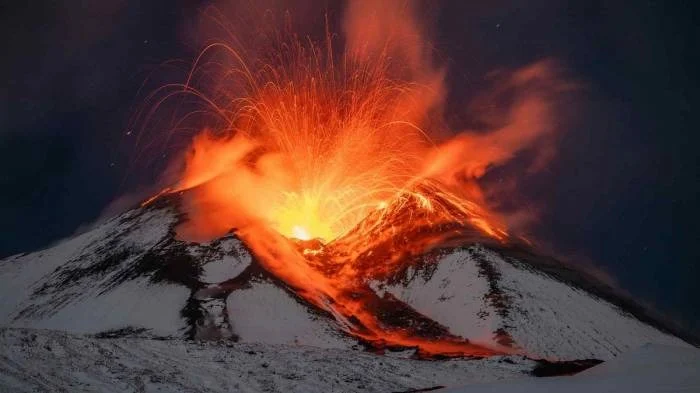Catania, Sicily – Travel chaos ensued as Mount Etna, Europe’s most active volcano, erupted on Sunday evening, forcing the closure of Catania-Fontanarossa Airport. The eruption caused significant disruptions to travel plans with dozens of flight cancellations, delays, and diversions, affecting thousands of passengers.
Volcanic Activity Grounds Flights
The eruption, which began late Sunday, led to an ash cloud blanketing the eastern part of Sicily. This forced the airport, one of the island’s busiest, to shut down temporarily. The initial closure was expected to last until 8 PM on Monday but was extended until early Tuesday morning as volcanic activity continued to pose a threat to air travel safety.
Mount Etna’s volatile behaviour has resulted in numerous interruptions over the years. The recent eruption is a stark reminder of the ongoing geological activity in the region, with authorities raising the alert level from F0 to F1.
Widespread Travel Disruptions
Catania airport handles around 200 flights daily, both domestic and international. The sudden closure left many passengers stranded, with airlines like Ryanair, EasyJet, and KLM scrambling to manage the situation. Several flights were diverted to other Sicilian airports, including Palermo and Trapani, although these alternatives are several hours’ drive away.
Safety Measures and Public Response
Authorities advised passengers to check with their airlines before heading to the airport. The eruption not only impacted air travel but also left streets in Catania covered in ash, complicating local transportation and clean-up efforts.
Is It Safe to Travel to Sicily During a Mount Etna Eruption?
Despite the frequent activity of Mount Etna, Sicily remains a popular tourist destination. Experts recommend staying informed about volcanic activity and adhering to safety advisories. While the current eruption has caused significant travel disruptions, flights are gradually resuming as conditions improve.
